Curtain Heading Styles
3" Pencil Pleat - This is the traditional standard heading for curtains and valances. A 7.5 cm (3") tape is used with three hook positions to suit all types of track and pole. We use a double fullness ratio to the track width for pencil pleat headings. Your curtains are supplied un-pulled for you to gather to the required width. Please see our guide for dressing your curtains for help with hanging.
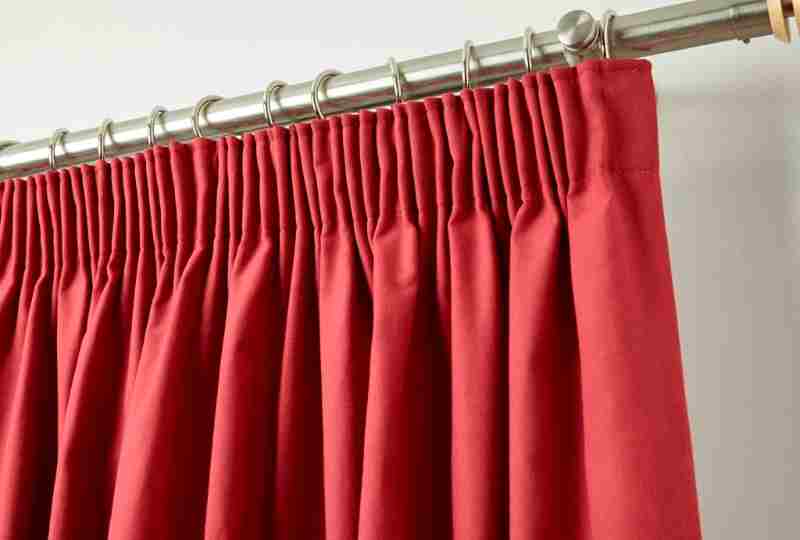
Triple pinch pleat heading – the standard triple pinch pleat heading uses 4” heading tape but 5” and 6” are available on request with a surcharge.
The average finished width per curtain width is 60cm. Pinch pleats use more fabric and are fuller than pencil pleats, we use a 2.25 fullness ratio to the track width for these headings. The pleats are hand-sewn in and permanently fixed for more luxurious, tailored look. Pinch Pleat headed curtains are supplied with a ratchet attachment sewn into the pleat and ready to hang, this is an adjustable attachment system which you can alter to your requirement.
We recommend the use of a pole and not a track to ensure the pleats hang correctly. Pinch pleat curtains need to hang freely with no obstruction behind them, as this prevents the spaces between the pleats from folding and stacking back properly and for this reason we always recommend to our customers that pinch headings are fitted on a curtain pole and not on curtain tracks.
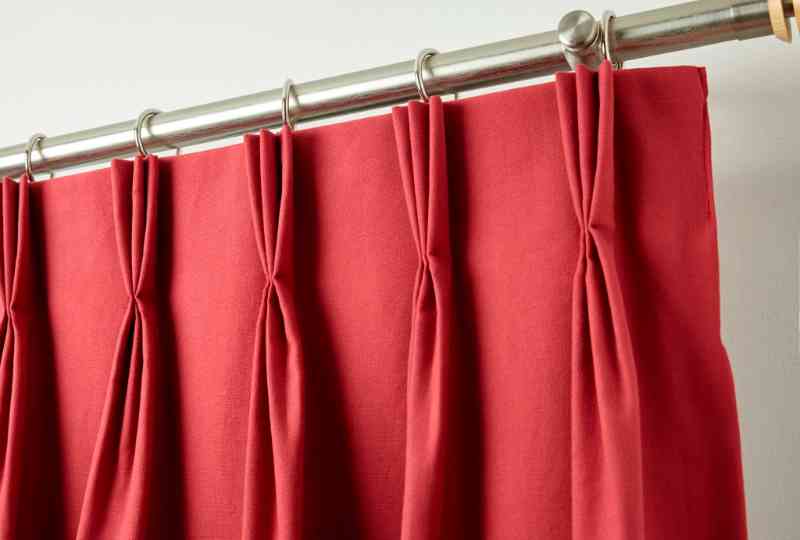
Eyelet curtain heading – the standard eyelet heading uses rings with an internal diameter of 40mm and are suitable for poles with a diameter of up to 30mm. Eyelet rings are available in 6 colours, Satin Silver, Chrome, Antique Copper, Old Gold, Brass and Gunmetal. For eyelet curtains measure from the top of the pole to the desired drop, we will make the necessary 4cm allowance above the eyelets.

Measuring for your curtains
Measuring the width – Always measure your track or pole and not your windows. We recommend that this track/pole extend 15-30cm past the window to allow the curtains to pull back and maximise the light into the room. This could be altered for customers preference. Also allow 10-15cm above the window to block out the light when the curtains are closed.
Track or Pole: Measure the width from end to end, excluding the finials
Tracks with overlap at the centre: Measure the track from end to end then add on the overlap.
Measuring the drop: Decide where you would like your curtains to finish, we recommend:
1. Below window sill – allow up to 20cm below the sill or 1cm above radiator
2. Window sill – 1cm above the window sill
3. Floor level – allow 1cm clearance above the floor
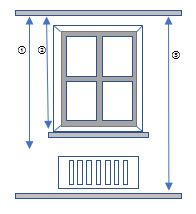
Tracks – all headings, measure from the top of the track to the desired drop (this assumes your hook will be in the top pocket of the pencil pleat/pinch pleat tape).
Poles – pencil and pinch pleats, measure from the bottom of the pole to the desired drop.
Poles – eyelet heading, measure from the top of the pole to the desired drop, we will make the necessary allowance above the eyelets.
Measuring for your roman blinds
Your Roman blind could hang inside the window recess or outside the window.
Fitting the blind inside the window recess – measure the width and height in 3 places to ensure you have accurate sizes. Always take the minimum of these measurements to ensure your blind has clearance from the walls when it is dropped down, then deduct 1cm for clearance from the smallest size.
Fitting the blind outside the window recess – decide how much you wish to overlap the recess and take these measurements.
To prevent light leakage, we would recommend an extra 5cm each side of the window, 10cm above the top of the window and 3cm below the bottom of the window.
The header rail is approximately 38mm deep and the blind covers the front of this completely.
Your Roman Blind will be delivered to you ready to hang, already attached to the header rail, see picture below.
The header rail has fixings to fix above the window or in the window recess, that is face onto the wall or above on the ceiling.
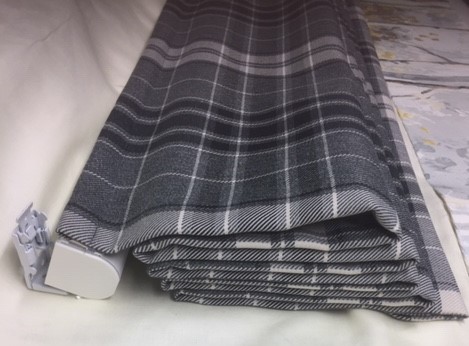
Blind cord and chain safety
Internal window blind cords and chains can pose a risk to babies and children who could injure or strangle themselves on looped operating cords and chains. Several practical steps to reduce the risk can be taken:
· Make sure all cords and chains are secured out of the reach of children
· Do not place a child’s bed, cot, playpen or highchair etc near to a window blind.
· Do not put sofas, tables, chairs, bookcases or shelves near to a window blind as children may climb on them.
· Make use of a safety device such as a cleat, cord/chain tidy or chain break connector.
For any further advice please visit: www.bbsa.org.uk
Dressing your curtains
How to dress your curtains: When pencil pleat curtains are first hung, they should be encouraged to fall into even folds. A fold is created from one hook (or ring) to the next and should be dressed evenly down the length of the curtain to the bottom. Draw them back and working from the top of the curtain to the bottom hem, run your hands firmly down the length of each fold or pleat. Place strips around each of the curtains to hold them in place. Do not pull too tight as you do not want to cause indentation marks in the curtain. Leave these on for roughly 2 to 3 days, longer if possible until they adjust to the humidity of the room. Then remove the strips and this will encourage the curtains to hang into folds. Our curtain maker suggests plastic strips (e.g. a plastic bag) of roughly 5-10cm in width around the middle and bottom of the curtain. Your curtains do not realise they are curtains yet but still think they are a roll of fabric!
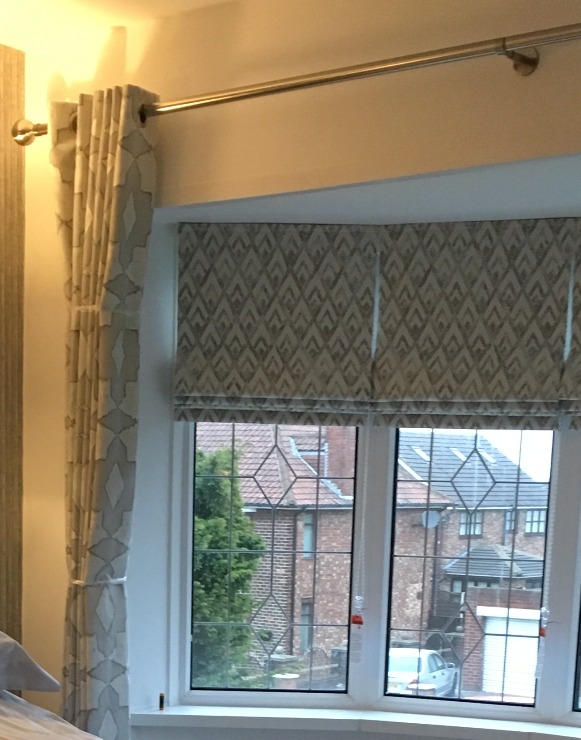
A common mistake is to use too many hooks. Hooks should be spaced approximately 10cm apart, when the curtain is gathered in. Poles are typically supplied with enough rings for this spacing i.e. a 240cm pole has 24 rings. It is more important with a curtain track to space the hooks correctly rather than use them all up. Folds are created in a pinch pleat curtain from one pleat to the next but the same dressing procedure applies. Folds are created easily in eyelet curtains from one eyelet to the next, again the same dressing procedure applies.
On unpacking your curtains or valance, there may be some creases or pressure marks. These will normally fall out after hanging in a warm room. We do not recommend ironing as steam or excess pressure and temperature can stretch or shrink the fabric.
Care Instructions: Any two dissimilar fabrics (e.g. a lining and a face fabric) should always be dry cleaned regardless of composition. For other cleaning instructions, please contact the fabric supplier.